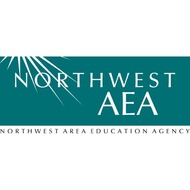
(View Complete Item Description)
In this seminar, you’ll learn about dialogue, including how writers use it to “move” their stories along. As a narrator, you will practice using dialogue, which will help you understand how people involved in conflict interact genuinely. Some lines of dialogue will be longer than others; there’s a reason for that. Some narratives have very little dialogue; there’s a reason for that. Ultimately, you will continue to analyze the perspectives of characters (people) in a narrative setting to better understand the human condition and how their voices contribute to it. This seminar will require innovation on your part, as you will not only learn terminology associated with dialogue, but also put those devices into action as you create your own (mini) narrative with characters who interact.StandardsCC.1.4.9-10.MWrite narratives to develop real or imagined experiences or events.CC.1.4.9-10.NEngage and orient the reader by setting out a problem, situation, or observation, establishing one or multiple points of view, and introducing a narrator and/or characters.CC.1.4.9-10.PCreate a smooth progression of experiences or events using a variety of techniques to sequence events so that they build on one another to create a coherent whole; provide a conclusion that follows from and reflects on what is experienced, observed, or resolved over the course of the narrative.
Material Type:
Lesson Plan
Author:
Tracy Rains




















